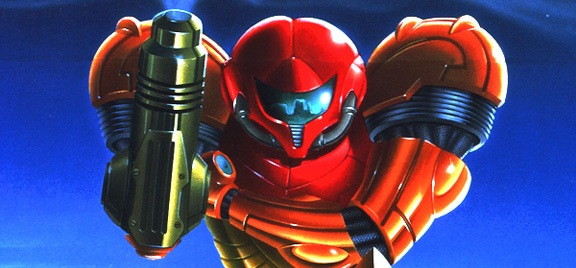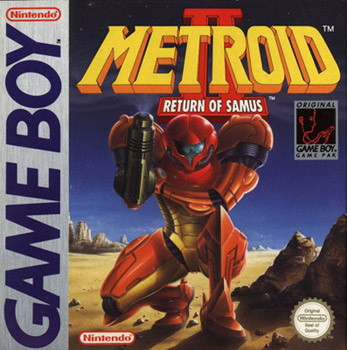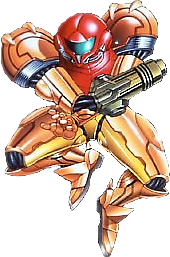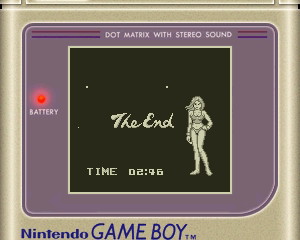
Nintendo surprised us all at E3 by announcing Metroid Prime 4, but they surprised us even more with the reveal of the Metroid II remake everyone in the Metroid community has been clamoring for. But why exactly is it that fans desired a remake to begin with? And is MercurySteam really up to the task?
We at Nintendo Castle have taken these considerations into account and put the original Gameboy outing up to the pedestal. We also had a look to see just what fans themselves wanted from a remake with the oft-praised and controversial Another Metroid 2 Remake. Finally, we put MercurySteam to the test and analysed their first Metroidvania styled effort with Castlevania: Lords of Shadow - Mirror of Fate, to see if they’re really up to the task.
Over the next few months, we hope to take you on a trip down memory lane, or maybe even your first ever exposure to this often forgotten classic amongst its newer, more well received peers. We will be marking the return of Samus... have you?
Check out Part 2 and Part 3 of this series!
Part 1: The First Descent
Metroid on the Nintendo Entertainment System was a cult hit, captivating many players with its dark atmosphere and unconventional game design. No longer must you rush from one level to the next, but the world was your oyster as you traversed through tunnels and discovered their secrets. When it came time to produce a sequel, the immensely popular Game Boy was a no brainer. So in 1991, the world was introduced to Metroid’s first portable outing, and the only one for another 11 years, Metroid II: Return of Samus.

Metroid II is often called out as the black sheep of the series (at least for a long while anyway, but that’s another story). Fans have been asking for a remake ever since Zero Mission, a remake of the NES original, was brought to the world in 2004.
Why exactly did people desire a remake, was the original no longer up to par? Since Super Metroid revolutionised the series, and was partially responsible for the genre now known as Metroidvania, yes. Super Metroid ended up superseding all the games that came before it, bringing a slew of new abilities and mainstays to the franchise.
But Metroid II can’t be all that bad, can it? To answer this, we will need to dig deep into the caves of planet SR388 once more to see just how much has changed over the years. The mission, hunt down and destroy all Metroids.

The game begins with Samus landing onto the surface to an upbeat and adventurous tune. The planet is rife with wildlife, but they’re mostly passive and make little attempts to attack Samus. One way leads to a dead end blocked by lava, so there is only one other direction to take. As you plow through, suddenly the wildlife thins, there’s nothing in your way. But eventually, you meet another dead end, and a Metroid. But instead of the iconic jellyfish headsuckers it mutates into a more armoured form.
This is the major change brought in for the sequel, Metroid evolution. There are now new forms of Metroid, Alpha, Gamma, Zeta and Omega; which don’t attack like they did in the first. Sadly, due to technical limitations of the Game Boy, all of them boil down to dodge and shoot. Even the most threatening of new evolutions just have different movement patterns and increasingly more missiles you need to pump into them.
Alas, the game still does a wonderful job conveying just how threatening the Metroids are supposed to be, wildlife scatters away from their nests and husks of the familiar and iconic form indicate that one or more are nearby. However, Samus as an avatar is fairly overpowered, being able to tank hits from them pretty easily. Defeating a Metroid causes a counter to clock down, which goes a little haywire in the corner to direct your attention to how many remain. The more Metroids you defeat, the more lava is removed to push you further into the planet.

Despite most people’s impressions of Super Metroid, Metroid II was actually the first to bring some iconic abilities to the table, such as the Plasma Beam, Space Jump and selectively used Spider Ball. But their usage isn’t exactly well executed. The Spider Ball is slow and clunky, sometimes not reacting to the player’s input because you were a pixel or so off actually being able to climb in the direction you want. The Space Jump is also a bit awkward, having an unclear input window to jump again in midair.
Metroid II is also the birthplace of the iconic shoulder pads on the Varia Suit, as the black and white display of the Game Boy meant they couldn’t just change the colour like before. Much like the original game, beams override each other upon collection. While there is a small hub containing all the beams to be collected at your leisure, it is unnecessary in the end as the Ice Beam is all you will really need to use throughout the whole game.
But one element that Super Metroid brought with it that prior entries could really have used was the in-game map. Metroid II can be awkward to navigate without the use of an external one. While it is certainly better than the original NES game, as it funnels you into distinct areas, demanding you defeat a certain number of Metroids before allowing further progression, it still isn’t perfect. Many rooms and tilesets end up being reused due to memory limitations on the Game Boy, which can be confusing to the player if they get lost. The map also has numerous areas that overlap with other spots, an oversight of the developers maybe?

Atmosphere is definitely one of the series’ highlights, and Metroid II does its best to deliver it. While many games, including the original, use music to evoke atmosphere, Metroid II is restricted yet again to the hardware it was built for. There are some noteworthy musical tracks, like the initial theme playing when you first start playing, but an awful lot of the soundtrack devolves to seemingly arbitrary beeps and boops. These just sound impactless and will likely get drowned out as background noise. However, you do get audible notification of accessing a new area, even if it’s just a short sequence of notes segueing into the next set of beeps.
Despite all this, the level design still conveys a message. As mentioned earlier, wildlife thins out as you enter Metroid nests, and the deeper you go into the centre of SR388 the fewer life forms appear and the stranger they become. Eventually, as you reach the final crawl, life almost seems to come to a complete stop. This shows just how much of a predator the Metroid are. This unfortunately makes recharging on health and missile an absolute chore, having to backtrack to recharge stations or grind it out on what little enemies there are in the current area.
With the majority of the Metroid exterminated, Samus finally reaches the Metroid Hive. Nothing persists here, it is devoid of all life except for Metroid. As you first climb in a lone Metroid egg makes itself apparent and the counter, which at this point used to show but one, rises. The iconic larval form we all know and love finally become present, having only just hatched. The Ice Beam is actually a necessity to defeating them, but the game is fortunate enough to have one last chance to pick it up just before entering the hive. Once defeated, there is only one last hurdle to overcome, the Metroid Queen.
The Queen is easily the hardest encounter in the game, having the highest missile total to defeat. She hits hard and fast, only getting faster the more she is hurt. There is a trick to defeating her though, if missile are shot into her mouth as she lunges her head towards you she can be stunned. You have two options to defeating her, either pump her up full of missiles (the boring way) or stun her with her mouth open and climb inside her as a Morph Ball and lay bombs in her stomach.
With the final challenge overcome, only one thing lies in wait, the Metroid egg from earlier. Instead of destroying it though, it hatches before your eyes and implants on Samus as if she is the mother. It follows you lovingly as you climb out of the hive towards the surface, breaking apart crystals that block your way. This is a rather sweet ending to story of destruction, showing mercy to an infant Metroid rather than killing it on cold blood. It’s still heartwarming, even after all these years.

As a whole, Metroid II hasn’t aged all that well. It isn’t surprising why a remake was demanded for so long. It controls well enough, but precise inputs are very hard to execute. It is much easier to play than the original game, but newer entries only superseded it, making it even harder to return to. Overall, it is still surprisingly playable. You have to approach it with a specific mindset though, and with a map on hand. It’s a quaint journey that can be revisited to check out just how things once were. But it would take take a dedicated fan to want to reimagine this journey to modern standards. Join us next month as we analyse the unofficial return to SR388 in the remake that could have been.